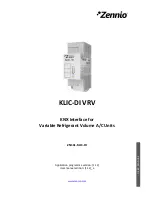
Hardware Installation—IFC-200 Hardware Installation Procedures 43
Supply Calculations
The IFC-200 requires connection to a separate dedicated AC branch circuit
(120 VAC), which must be labeled FIRE ALARM. This branch circuit
must connect to the line side of the main power feed of the protected
premises. No other equipment may be powered from the fire alarm branch
circuit. The branch circuit wire must run continuously, without any
disconnect devices, from the power source to the fire alarm control panel.
Overcurrent protection for this circuit must comply with Article 760 of the
National Electrical Codes, as well as local codes. Use 14 AWG wire with
600 volt insulation for this branch circuit.
Use Table 5 to determine the total amount of current, in AC amps, that
must be supplied to the system.
Table 5: AC-Branch Circuit Requirements (@120 VAC)
Device Type
Number of
Devices
Current Draw
(amps)
Total Current
per Device
IFC-200
1
X
3.0
=
3.0
NR 45-24
Charger
[ ]
X
1.0
=
Sum Column for AC Branch Current Required
=
amps
The IFC-200 provides regulated power for operating the fire alarm control
panel, operating external devices, and operating the standby battery. The
power for operating external devices is limited. Use Table 6 (standby or
non-alarm) and Table 7 (alarm) to determine if external loading is within
the capabilities of the power supply.
Refer to the manufacturer’s data sheet packaged with each smoke detector
or to the appropriate product literature in the Standard Equipment section
of the Fire Initiating and Annunciating Devices Technical Manual (FAN 408)
to find the standby and alarm current draws to use in the tables of this
document. Be sure to power detectors from TB-1, terminals 5 and 6.
AC Branch
Circuit
Main Power
Supply
Smoke Detectors






































